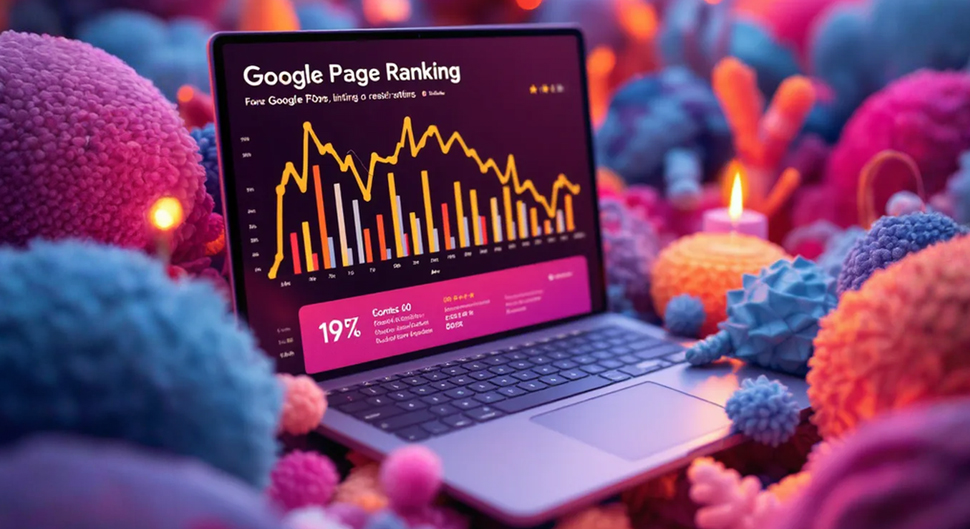What’s PageRank?
Google Products Jun 20, 2007

What’s PageRank?
Many website owners are upset or puzzled when their website’s Google PageRank decreases or fails to increase. Is it worth losing any sleep over changes in that green line and number that appear in a Google toolbar at the top of your browser? I think that excessive worry or thought about PageRank is not constructive, and it’s better to put it all in perspective by taking a rational look at what PageRank is and what it isn’t
First of all, the concept behind PageRank is indeed at the heart of Google’s ranking process.
The Google founders came from academia, and they noticed that in many academic documents, some sources were continually cited. They reasoned that if a particular document, such as a book or research paper, was mentioned in many places, then it must be important.
They applied this to the web and assumed that if one website links to another, it is, in fact, giving a “vote” for that site. A website that has many incoming links must have a certain degree of importance. In the current Google algorithm, the quantity and quality of incoming links are key factors in determining a website’s ranking for a given search query.
In the early days of the web, people would build websites and then tell their visitors to check out other “cool” sites, linking to these sites.
This is the process of natural linking, and it continues to this day. If you have excellent content, people will link to you without even knowing. Similarly, if your name is Bob Dylan and your website is www.bobdylan.com, thousands of people will link to you without you having to send a cheesy email begging for a link.
Various government agencies, educational institutions, established companies, and other prominent entities in the real world are likely also to be distinguished on the Internet, simply by virtue of their previous fame and accomplishments. Google’s ranking system took this into account, which is one reason why Google is currently the world’s most popular search engine. It yields better results, which is why people use it.
But, does that mean that only the big players can be seen on the net?
Far from it. While there is a difference between one person working from home with one computer and a corporate giant with a whole staff, this is indeed reflected in rankings. However, the Internet provides a much leveler playing field than it did in the past.
Prior to 1995, it would have been difficult for someone to share their news and views widely, as bloggers do today. It costs millíons of dollars to publish a daily newspaper or to print and circulate a magazine, but it costs far less to publish a website or a blog, and lots of “little guys” have taken advantage of the power of the Internet.
But what about PageRank? How much of it do I really need to get my site noticed?
For those who are not familiar with the PageRank system. Google provides a toolbar that you can download and install in your browser. If you complete a full installation with all the advanced features, every time you open a new website, you will see a green and white bar labeled ‘PageRank’.
Place your mouse on the bar, and you will see a number ranging from 0 to 10. If Google does not index a website or has banned it, the site may appear gray or all white.
But what do the numbers mean? I had a client who was worried about his number 3 PageRank figure, and based on my observation, I shared my unofficial view on the rankings. Here is how I currently see it:
PageRank 0 indicates that a site has few links and needs improvement.
However, and this is a big caveat, it may significantly impact your search engine rankings. I have a client with a page rank of 2, and his site ranks well, even number one, for several search terms in a relatively competitive industrial category.
So, PageRank is not everything; it may have an impact on your rankings and traffic, but in some cases, it may not matter. In any case, if you have a PageRank of 0-2, you can improve it through proper link-building activity, which I will explain at the end of the article.
#3 can be okay in some cases, but in highly competitive industries, you should work to improve it.
#4 is quite normal and indicates that you have enough links, either in quantity or quality, to make your site competitive.
#5 indicates that a site has many links or links from authoritative sites, and that Google has a high level of trust in the site. It is a respectable and attainable PageRank.
#6 is complicated to attain. This rank indicates that the site has many links and links from respected places.
#7-10 is usually earned by large and established institutions or websites that have tremendous authority, due to the quantity and quality of the incoming links. It’s tough to achieve this ranking.
If you want to íncrease your traffíc and also PageRank, then here are a few steps that you can take:
1. Add content to your website. Make your website so good and so valuable that people will link to you without you asking for a link.
2. Write articles and get them published on other websites and blogs with a link back to your site.
3. Distribute online press releases
4. Judiciously exchange links, or even better, exchange content (containing links back to your site) with other websites.
5. Get your site listed in online directories.
These efforts will undoubtedly help you build targeted traffic, and they will most probably also help you increase your PageRank as well.
Post excerpts from Donald Nelson